Introduction to ancient cultures and healthcare practices
In the vast tapestry of human history, ancient cultures have left behind a legacy of wisdom and knowledge that continues to shape our societies today. Among the many aspects of life that these ancient civilizations excelled in, healthcare practices hold a special place.
From the advanced medical systems of ancient Greece and Rome to the holistic healing methods of ancient India and China, each culture developed unique approaches to healthcare.
Healthcare practices started with strong beliefs in gods attributed as the gods of suffering and sickness and the gods of prosperity and happiness. People started to make happy their gods of sufferings by offering sacrifices and dances.
Some of them learned magic to heal the sick in their societies. There were many ancient civilizations and cultures in which healthcare practices were being evolved.
1. Ancient Greek healthcare practices 800-300 BC
Ancient Greece, often considered the cradle of Western civilization, has made significant contributions to the field of healthcare. The Greeks believed in a holistic approach to health, emphasizing the balance of mind, body, and spirit.
The father of modern medicine was born in 400 B.C. when Greek civilization was heavily inspired by the powers of gods. His name was Hippocrates. He told the world about the natural cause of disease and his treatment method was patient-centered.
He introduced scientific methods of treating illnesses. He presented his philosophy that health is the equilibrium of the body, environment, and mind. Physicians such as Hippocrates laid the foundation for modern medical ethics and practice.
People of ancient Greece believed in healthy bodies. Greek mythology is a vast subject that tells us about many healthcare practices in ancient Greece.
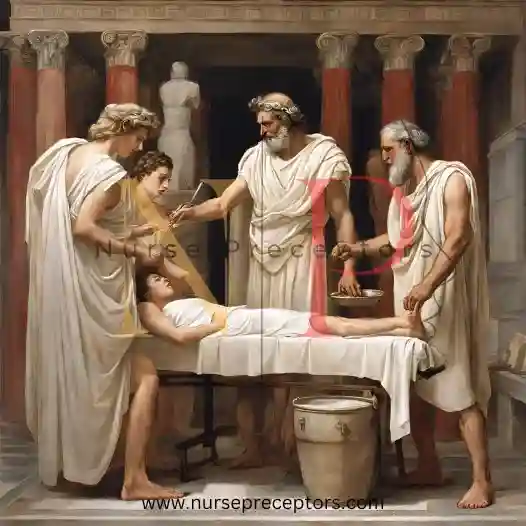
Asklepios, the son of Apollo, learned the many healing arts from a wise centaur Cheiron. Asklepios traveled to many places to heal the sick. Initially, two temples were built to cure the sick people. Despite that two, other institutions were also built to cure travelers, sick and injured people.
These institutions were primitive models of ambulatory services and hospitals. Many other philosophers, biologists, physicians, and surgeons were also born in ancient Greek civilizations that changed the whole concepts of disease and medicine such as Aristotle was the first person who systematically read biology, and Galen who first demonstrated the fact of arteries and veins in the body.
You May Also Like To Read : Healthcare in Ancient Cultures
2. Healthcare practices in Ancient Rome 800 BC to 476 AD
The beauty of the Roman Empire was that it was a very organized and managed civilization. They believed in a healthy environment. Their hygiene and sanitation system was well advanced.
Their houses were designed for good ventilation and bathing facilities. They also constructed many public baths. The Roman Empire was very extensive in those times.
Many healthcare practices adopted by the Romans were outside Rome when physicians of other countries were made slaves to provide healthcare services to Romans.
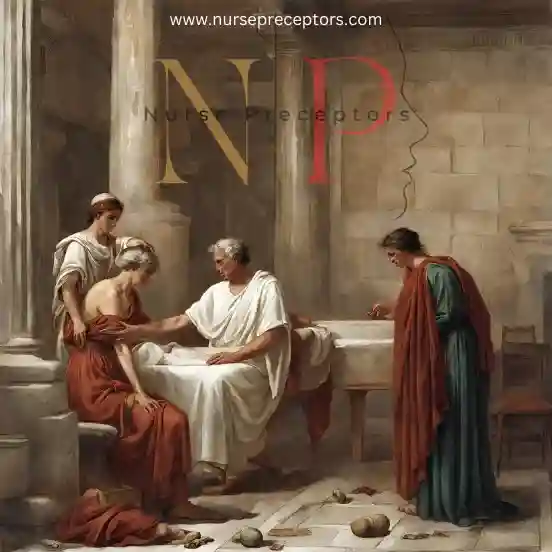
Roman physicians inherited the principles of Greek medicine but also incorporated their innovations. Public health and sanitation played a vital role in Roman society, with the establishment of aqueducts, sewers, and public baths.
The Romans believed in preventive medicine and emphasized the importance of cleanliness and hygiene. They also developed advanced surgical techniques, including the use of anesthesia and the treatment of battlefield injuries. Roman hospitals known as “Valetudinaria” provided medical care to soldiers and civilians alike.
Join the conversation and stay informed with the latest nursing articles and blogs!
3. The healthcare system in Ancient Egypt 3000 BC
Ancient Egypt, known for its remarkable civilization, also had a well-developed healthcare system. The Egyptians believed in the interconnectedness of the body and the spirit, seeking to maintain a balance between the two for good health.
Priests served as both religious and medical practitioners, using natural remedies and magical incantations to heal the sick. The Ebers Papyrus, one of the oldest medical texts in existence, reveals the extensive knowledge of Egyptian physicians.
They specialized in various fields such as dentistry, gynecology, and surgery. The construction of temples dedicated to the goddess Sekhmet, the patroness of healing, further highlights the importance of healthcare in ancient Egypt.
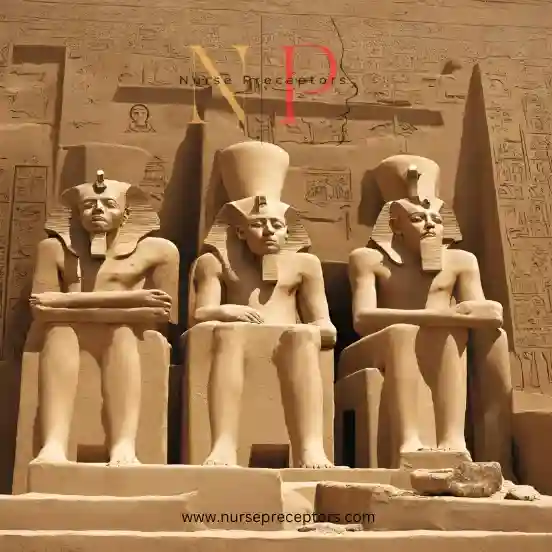
Ancient Egyptian civilization was settled along the banks of the Nile River. In Egyptian society healing was the responsibility of the priests. They believed in the pleasure of gods for their health and security.
Sickness was inflicted by the presence of evil spirits. Egyptians wrote many medical books. These books describe surgical methods, disease processes, birth control techniques, and methods and remedies. Egyptians developed pharmacopeia with the classification of more than 700 drugs.
The concept of disease transmission and isolation also evolved in the ancient culture of Egypt. They made strict rules about hygiene, food, water, sexual relationship, and exercise.
For communicable diseases, they built the “houses of death” to isolate the sick people who were located far from society. Egyptian people were skilled in the preservation of bodies and dentistry. In present times many mummies are found with gold filling of teeth.
The women of ancient Egypt were considered respectful. They usually worked with priest physicians in temples and served as midwives and wet nurses.
4. Traditional medicine in Ancient India 3000-1500 BC
In ancient cultures, the first civilization of India is circa 3000 to 1500 B.C old discovered by the excavations. They were highly developed with many amenities like sanitation, public baths, servant quarters, and bathrooms.
Ancient India boasts a rich tradition of healthcare practices that are still influential today. Ayurveda, one of the oldest medical systems in the world, forms the foundation of Indian medicine. Ayurvedic practitioners believe in the balance of three fundamental energies, or doshas, known as Vata, Pitta, and Kapha.

Through herbal remedies, dietary guidelines, and lifestyle practices, Ayurveda aims to restore harmony within the body. Vedas also described the prevention of disease, major and minor surgeries, hygiene, children’s diseases, and diseases of the urinary and nervous systems.
Yoga and meditation, integral components of Indian culture, are also considered therapeutic practices. Ancient Indian texts such as the Charaka Samhita and the Sushruta Samhita provide comprehensive knowledge of various medical conditions and surgical procedures.
You May Also Like To Read : Complete course of Generic BScN
Another major religion of India came into existence in 500 B.C., when 29 years old man Siddhartha Gautama left his house to find salvation and establish a deep spiritual relationship. He declared himself Buddha and introduced a new religious philosophy.
During the reign of Buddhist King Asoka, Indian civilization developed its practices of medicine, surgery, disease prevention, sanitation, and hygiene.
Mother and child care practices also gained importance. Buddhists did not believe in the discrimination of the caste system, they developed a system for education and the right to peace for everyone.
They constructed public hospitals where nurses were appointed to serve the people. Although, the majority of the nurses were male the old women could also participate in serving humanity.
5. Ancient Chinese healthcare practices 3000-249 BC
China has a long and illustrious history of healthcare practices that span thousands of years. Traditional Chinese medicine, deeply rooted in the concept of balance and harmony, is still widely practiced today.
Traditional Chinese medicine views the body as an interconnected system where imbalances cause disease. Acupuncture, the insertion of thin needles into specific points on the body, is a well-known therapeutic technique used in Traditional Chinese medicine.
Herbal medicine, qigong exercises, and dietary therapy are other key components of this ancient healing system. The use of ephedrine was common in the treatment of many diseases which is also part of modern medicine.

They first introduced the philosophy of Yang and Yin which also influences the concept of modern alternative medicine. According to Chinese, Yang is the active and positive force attributed as masculine and Yin is the passive and negative force attributed as feminine.
The balance between Yang and Yin was considered the basis of maintaining normal boy functions and good health of the human body. The Huangdi Neijing, also known as the Yellow Emperor’s Inner Canon, is a foundational text of Traditional Chinese medicine that offers profound insights into the philosophy and practices of Chinese medicine.
6. Healthcare practices in Ancient Persia 600-300 BC
Ancient Persia, located in what is now modern-day Iran, had a sophisticated healthcare system that combined elements from various cultures. The Persian Empire was extended to all of Fertile Crescent.
The Persian religion was based on the philosophy of a prophet who lived in 600 B.C. Their holy book of Zoroaster described the concepts of one evil spirit and one Holy Spirit. Earth, water, and fire were believed as sacred elements of life.
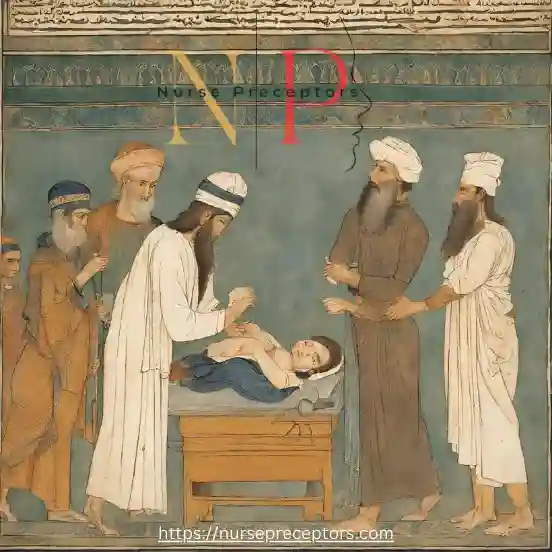
Persian physicians were known for their expertise in herbal medicine and surgery. Persians constructed institutions for priest physicians where three types of healing arts by fire, by herbs, and by exorcism were taught to them.
The Persian Empire also prioritized public health, implementing measures such as the provision of clean water and the construction of hospitals and medical centers.
The influence of Persian medicine spread to neighboring regions and played a significant role in the development of Islamic medicine during the medieval period.
7. Ancient Israel’s healthcare system 1900 BC
Ancient Israel, steeped in religious and cultural traditions, had its unique healthcare system. The Hebrew Bible, or the Old Testament, contains medical references and guidelines for maintaining good health.
The Levitical laws provided a framework for public health and hygiene, emphasizing cleanliness and disease prevention. The priests, known as Kohanim, had responsibilities that included overseeing matters of health and healing.
The Talmud, a collection of Jewish legal and ethical teachings, also contains discussions on medical ethics and practices.
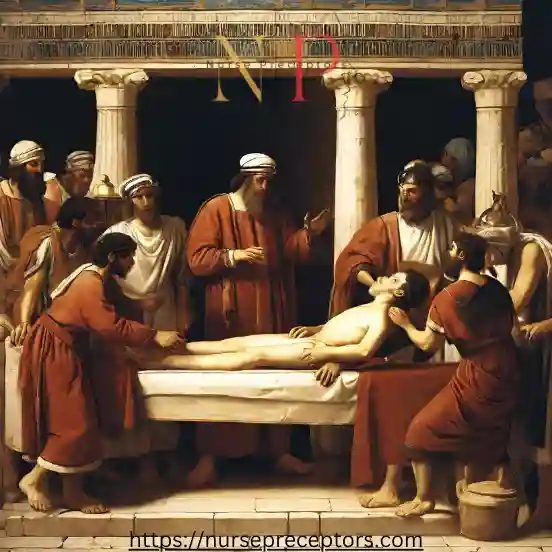
The healthcare practices prevalent in ancient Israel around 1900 BC were largely grounded in a mix of religious beliefs, traditional wisdom, and empirical observations. It is noteworthy that these medical practices were not only confined to the physical well-being of individuals but also extended to their spiritual health, which was considered equally significant.
The socio-cultural fabric of ancient Israel had a profound influence on its healthcare practices. Religious and spiritual beliefs played a cardinal role in shaping these practices. For instance, many illnesses were seen as divine punishment for sins, and healing was often sought through prayers, rituals, and atonement.
However, it must be noted that such spiritual cures were not the only healthcare practices of ancient Israel. There were also pragmatic physical interventions based on observations and experience.
One of the most common healthcare practices in ancient Israel was the use of herbs and natural substances for treatment. This included concoctions prepared from plants, animal parts, minerals, and other natural elements known for their medicinal properties.
These treatments often relied on the knowledge passed down through generations. In addition to these, ancient Israel had a well-established system of quarantine during times of contagious diseases.
This practice showed an understanding of infection control long before the germ theory was proposed. It is also known that the practice of circumcision in ancient Israel had hygienic implications, reducing the risk of certain infections.
Despite the lack of modern science and technology, the healthcare practices in ancient Israel around 1900 BC were reasonably effective for their times. They were a blend of faith and pragmatism, addressing both the spiritual and physical aspects of health.
The emphasis on hygiene, the use of natural remedies, and practices like quarantine reflect a degree of understanding and wisdom that contributed to the overall health of the society.
Many modern healthcare systems could benefit from understanding these holistic health perspectives which integrate both physical and mental wellbeing.
8. Healthcare practices in Babylonia and Assyria 2100-635 BC
The ancient civilizations of Babylonia and Assyria, located in present-day Iraq, had well-established healthcare practices that influenced neighboring cultures.
Babylonian physicians were skilled in diagnosing and treating various ailments, often using herbal remedies and incantations. The Code of Hammurabi, one of the earliest known legal codes, included regulations related to medical practice.
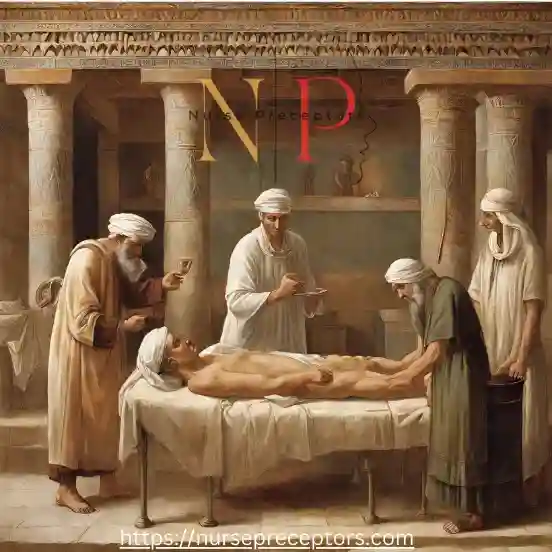
Assyrian medicine focused on practical healing methods, with physicians specializing in specific areas such as ophthalmology and dentistry. Both civilizations valued the use of magical rituals and divination in their healthcare practices.
9. Traditional medicine in Ancient Arabia 570 AD
Ancient Arabia, home to diverse cultures and civilizations, had unique healthcare practices. The Arab physician, philosopher, and scholar Ibn Sina (Avicenna) made significant contributions to medicine with his influential work, “The Canon of Medicine.” Avicenna’s holistic approach to healing and his emphasis on observation and experimentation greatly influenced medical practices in the Islamic world and beyond.
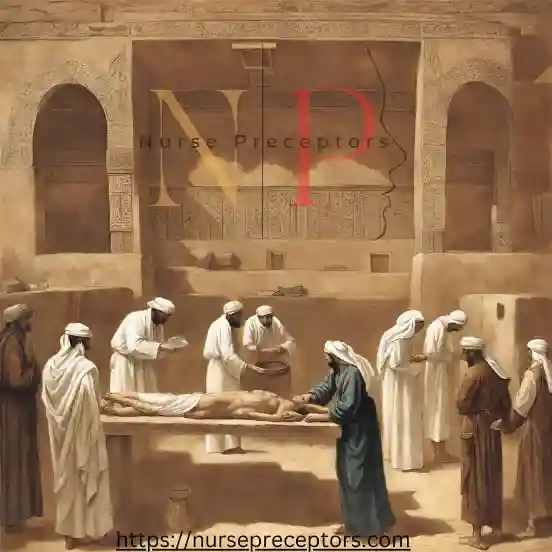
Traditional healing methods such as herbal medicine, cupping therapy, and aromatherapy were also prevalent in ancient Arabia.
10. Healthcare practices in Mayan and Aztec civilizations 2000-1000 BC
In the ancient Americas, the Mayan and Aztec civilizations developed healthcare practices that reflected their deep connection with nature and spirituality.
Mayan healers, known as “H’men,” utilized a combination of herbal medicine, prayer, and ritual ceremonies to restore health. The healing arts were considered sacred, and Mayan physicians often integrated their medical knowledge with astrology and divination.
The Aztecs, influenced by the Mayans, also had a complex healthcare system that incorporated herbal medicine, surgery, and spiritual healing. Temples dedicated to the god of healing, Yacatecuhtli, served as centers for medical treatment and training.
Comparing and contrasting ancient healthcare practices in ancient cultures
As we explore the healthcare practices of ancient cultures, intriguing similarities and differences emerge. While each civilization developed its unique approach, certain commonalities can be observed.
Holistic healing, the importance of preventive medicine, and the recognition of the mind-body connection were principles shared by many ancient cultures. However, variations in beliefs, available resources, and cultural contexts led to diverse practices.
By studying these differences and similarities, we gain a deeper understanding of the universal human quest for health and well-being.
The influence of ancient cultures on modern healthcare
The wisdom and knowledge of ancient cultures continue to resonate in modern healthcare practices. Concepts such as holistic healing, preventive medicine, and the mind-body connection find echoes in contemporary approaches to healthcare.
Many traditional healing methods, such as acupuncture and herbal medicine, have been integrated into mainstream medicine.
The ethical principles established by ancient physicians, such as Hippocrates, still guide medical professionals today. By acknowledging and appreciating the contributions of ancient cultures, we honor the timeless wisdom that has shaped our understanding of health and healing.
Conclusion
Unveiling the wisdom of the ages, we have embarked on a journey through the healthcare practices of ancient cultures. From Greece to Rome, Egypt to India, China to Persia, and beyond, each civilization has left behind a treasure trove of knowledge and insights.
The impact of these ancient healthcare systems can still be felt in the modern world, as their principles continue to shape our approach to well-being.
By exploring these ancient practices, we gain a deeper appreciation for the rich tapestry of wisdom that has been passed down through the ages.
Let us embrace this wisdom, honoring the ancient cultures that have paved the way for our present understanding of health and healing.
References:
- Ellis, J.R. and Hartley, C.L. (2012) Nursing in today’s World: Trends, issues & management. Philadelphia: Wolters Kluwer Health/Lippincott Williams & Wilkins.
- Berman, A. et al. (2016) Kozier & Erb’s fundamentals of nursing: Concepts, process, and Practice. Pearson Education: Harlow.
- DeLaune, S.C. and Ladner, P.K. (2011) Fundamentals of Nursing: Standards & Practice. Clifton Park, NY: Delmar Cengage Learning.
- Potter, P.A. et al. (2019) Essentials for nursing practice. St. Louis, MO: Elsevier.
- Tountas, Y. (2009) The historical origins of the basic concepts of Health Promotion and education: The role of ancient greek philosophy and medicine, OUP Academic.
- Nursing and medicine in ancient times (2021a) Springer Publishing.